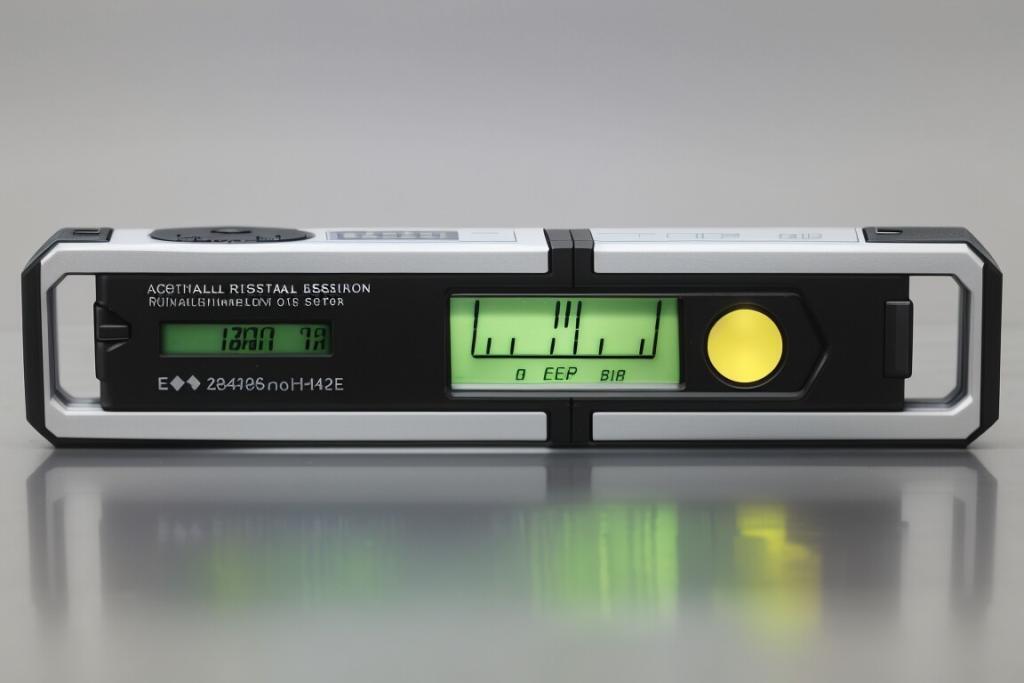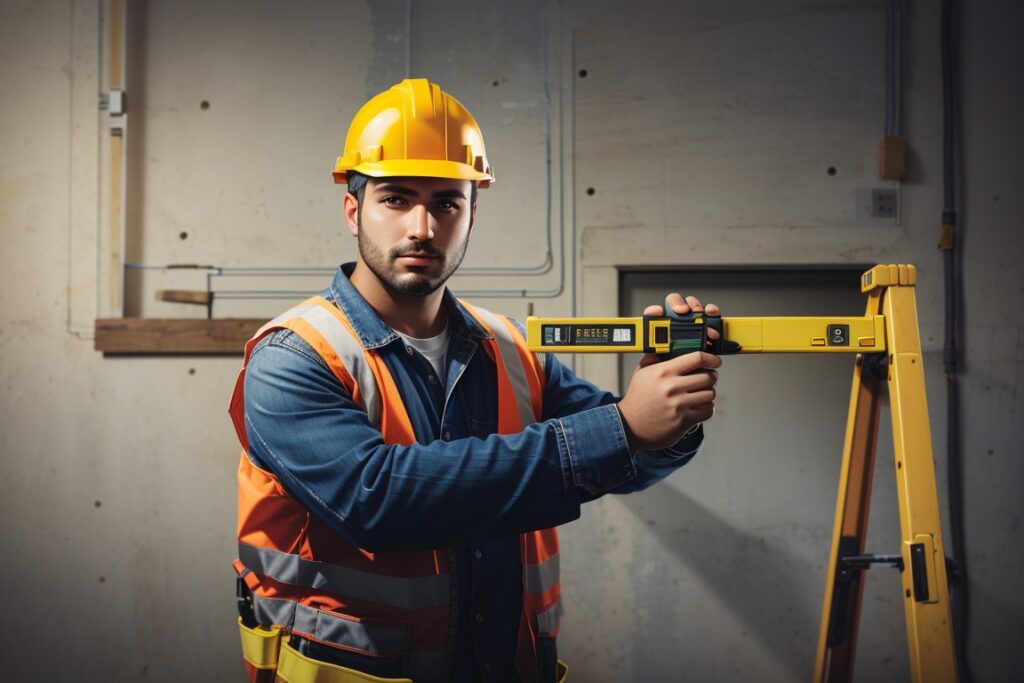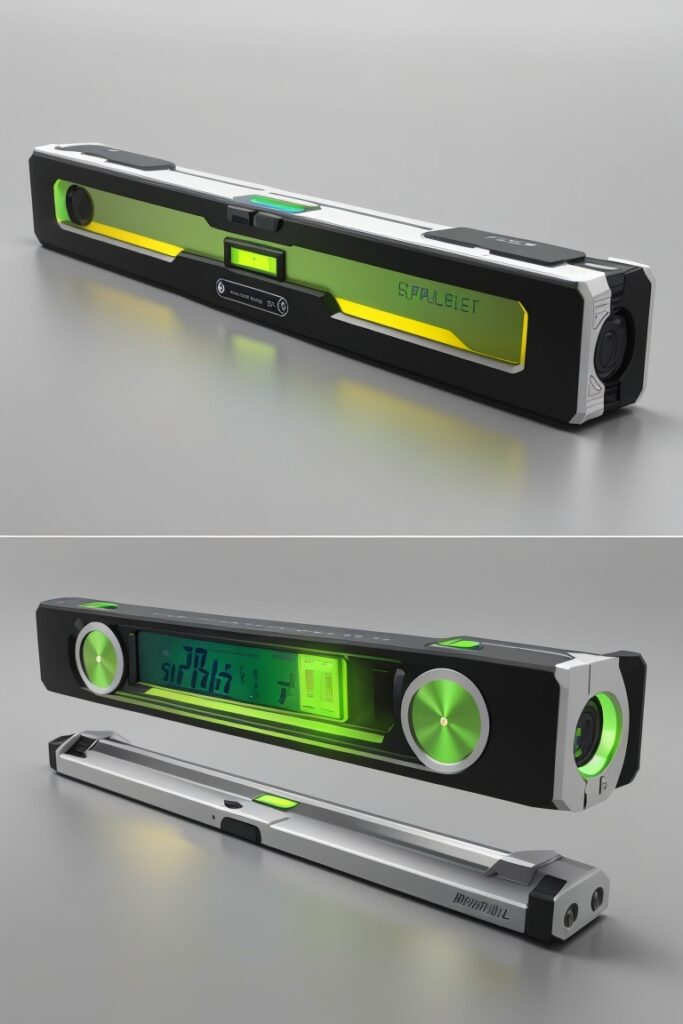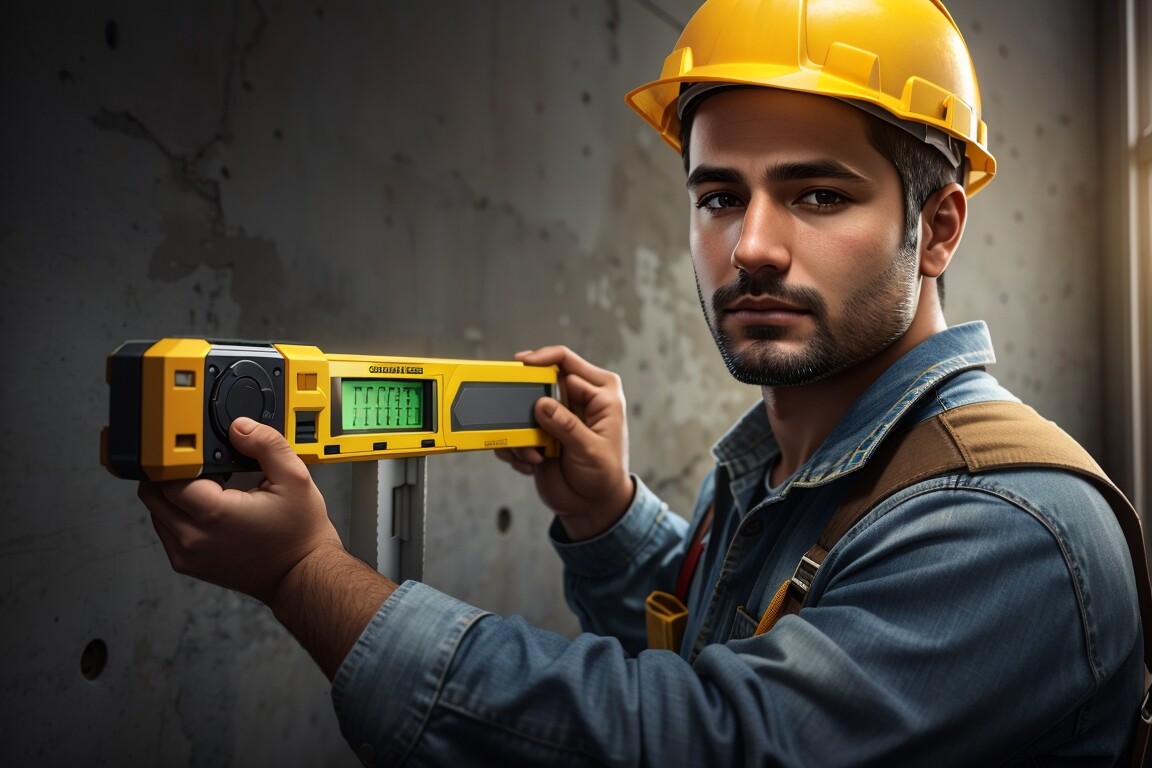A Digital spirit level is not just cool, but it provides extremely accurate readings. So when it comes to determining if those pricey digital levels are really worth the cost, I’ve got some thoughts to share from experience.
Contents
Is a Digital Level Worth It, Should I Get One?
Before weighing the pros and cons, let’s quickly cover what makes a digital level different than your standard spirit level.
A digital level uses accelerometers and electronics to detect angles and tilt. Rather than eyeballing a bubble, you get precise measurements displayed right on the digital screen. It’s the same technology in smartphones that rotates the screen when you turn it sideways.
Most digital levels display two axis measurements – the angle of tilt from horizontal and vertical. This allows you to level surfaces in all directions. And the readings are extremely accurate, often down to 0.1 degrees of precision.
So in summary, digital levels take the estimation out of leveling. You get an exact numerical angle rather than guesstimating the position of a bubble.

The Advantages of Going Digital
So why would someone pay 3-4 times more for a digital level over a basic one? Here are some of the key benefits I’ve experienced:
Precise, Objective Readings
The #1 advantage of digital is the precision. There’s no room for error or different interpretations when you get an exact angle measurement. If my digital level says 1.5°, I know the surface is precisely 1.5° off level.
With a bubble level, one carpenter might say a surface is level while another argues it’s slightly off. The digital reading eliminates any guesswork or subjectivity.
This precision becomes especially critical for projects where being perfectly level is crucial – like tile floor installation or wiring sensitive equipment. Just a fraction of a degree off can ruin the job.
Visibility in Low Light or Tight Spaces
Have you ever struggled to discern the bubble position on a spirit level when working in a dark area? I constantly deal with this issue when installing cabinets or lighting under sinks.
The illuminated digital display is a lifesaver in these situations. You get a clear reading even in pitch black crawl spaces where a bubble level would be useless.
Similarly, the digital screen can be seen easily when the level itself is hard to view directly – like when taking readings on surfaces high overhead or when squeezed into tight spaces.
Added Features and Functionality
Beyond just the digital angle display, many digital levels include extras like:
- Magnetized edges for hands-free use on metal surfaces
- Memory storage to record multiple measurements
- Built-in sensors like gyroscopes and 360° protractors
- Backlit screens for use in the dark
So you’re getting more than just a digital bubble replacement – there are added tools and capabilities that enhance functionality.
Convenient and Easy to Use
Let’s be honest – for casual users, digital levels are just plain cool and fun to use. The instant precise readout makes levelling tasks easier and more convenient.
I’ll admit I’ve become a bit spoiled by the ease of use. Trying to level a shelf with an old bubble level now feels annoying and imprecise. The digital interface makes levelling almost enjoyable!

Downsides to Going Digital
Of course, any new technology has some drawbacks. Here are a few I’ve encountered:
Higher Upfront Cost
There’s no getting around the fact that digital levels carry a higher price tag. You can easily find a basic spirit level for under $10, while digital levels start around $30 and go up to hundreds.
For cost-conscious buyers like DIYers with tight budgets, shelling out a lot for a tool used infrequently may not make sense. The price alone can be prohibitive.
Ongoing Battery/Charging Needs
Unlike trusty old bubble levels, digital devices of course require power. Most use button or lithium batteries that must be replaced occasionally. Others recharge via USB.
This means keeping spare batteries on hand or remembering to charge it regularly. The last thing you want is to grab your digital level for a job and find it dead.
Fragile Electronics
Let’s face it – construction sites are tough on tools. Drops, dirt, moisture are all hazards. Electronic digital levels have more fragile components than a vial of fluid.
I’ve had a few digital levels lose calibration or even stop working after a bad fall. Repairing or replacing them gets costly. For extremely rugged job site conditions, a basic level may make sense.
Overkill for Simple Uses
A final consideration is how often you really need ultra-precise measurements. For quick household stuff like hanging decor or shelving, a basic level is probably adequate.
The high level of precision (pun intended) digital offers may be overkill if you don’t regularly need perfect accuracy.
Good Uses for Digital Levels
When does it make sense to buy a digital level? Here are the types of uses where I think they are worth the investment:
Professional Tradespeople
For carpenters, masons, tile setters and other pros who need precise measurements constantly, a digital level’s accuracy makes it an essential tool. When livelihoods depend on perfection, the price is justified.
I use my digital level for just about every professional job now. My favorite is the Stabila 96-2 – a bit pricey at $175 but well worth it for the reliability and accuracy.
Critical Alignment Applications
As mentioned earlier, some projects allow for no margin of error when leveling. Equipment like machinery, appliances, or cabinets must be perfectly level and even a degree off could be a big problem.
I recently installed some sensitive laboratory equipment that had rigid leveling requirements. My digital level ensured I met the strict tolerances needed.
Hard-to-Access Areas
When taking measurements in tight quarters or overhead where physically reading a bubble level is difficult, the digital display makes things much easier.
Just yesterday I was leveling ceiling light fixtures in a cramped attic. Being able to read the precise angle on the digital screen without moving a muscle was invaluable!
High-Precision Craftspeople
While maybe overkill for hanging basic shelves, tradespeople doing detailed finish work swear by digital levels. Think hardwood flooring, custom carpentry, or masonry.
My carpenter friend who does custom decorative molding and cabinetry constantly praises his digital level for enabling his meticulous work. For detail-oriented pros, it’s a must-have.

Should a DIYer Buy One?
For casual home projects, digital levels are luxuries, not necessities. Hanging artwork or fixing squeaky doors doesn’t require lab-grade precision. So I hesitantly recommend them for DIYers.
However, if you are a hobbyist who loves gadgets and has the discretionary budget, a digital level can still be a fun toy to have around. I’ll admit I think they’re cool and add that extra level of accuracy as long as you get the right size digital level that suit your needs.
Just don’t expect it to be an investment that improves your basic home projects. For that purpose, a $5 bubble level will do just fine.
The Bottom Line
So is a digital level worth it? Here’s my take in a nutshell:
For professional tradeworkers using levels frequently for critical alignment tasks, the digital accuracy and features justify the cost.
But for occasional basic home projects, a basic spirit level will meet most needs fine at a fraction of the price.
At the end of the day, consider your specific needs and budget. And don’t be afraid to just get the digital one because it’s cool tech if you want to! With experience, I’ve developed a good instinct for when jobs truly require the precision of digital levels over a $3 plastic one.
Hope this gives you some guidance on choosing the right type of level for your needs. Let me know if you have any other questions!
Frequently Asked Questions:
Q: How accurate are digital levels compared to spirit levels?
A: The accuracy depends on the specific digital level, but commonly they can measure angles down to at least 0.1 degrees. The best professional models are accurate to 0.05 degrees or 0.02 degrees. Spirit levels rely on human estimation so have an accuracy of about 1-2 degrees.
Q: What are some other features found in digital levels?
A: Higher-end digital levels may include data storage to record measurements, built-in sensors like gyroscopes and 360° protractors, temperature resistance, connectivity with apps/software, and rugged waterproof designs. Some also have magnetic strips for hands-free use.
Q: How long does the battery last in a digital level?
A: Expect anywhere from 20 hours to 60 hours of battery life depending on the model and type of battery used. Some higher-end digital levels have replaceable lithium batteries, while cheaper models use button cell watch batteries. Rechargeable levels with USB charging are also available.
Q: Can digital levels get damaged if dropped?
A: Yes, being electronic devices, digital levels can lose calibration or sustain internal damage if subjected to severe impacts, vibration, or moisture. However, better models have shock-absorbing bumpers and waterproof casing to improve durability. But in general, they require more careful handling than basic spirit levels.
Q: Are digital levels worth it for DIY home projects?
A: For basic home projects, a simple spirit level is likely sufficient, unless you frequently work in hard-to-access areas where the digital readout is beneficial. Digital precision is overkill for most basic DIY tasks. But hobbyists may find them useful and fun to use. Consider your budget and needs.



